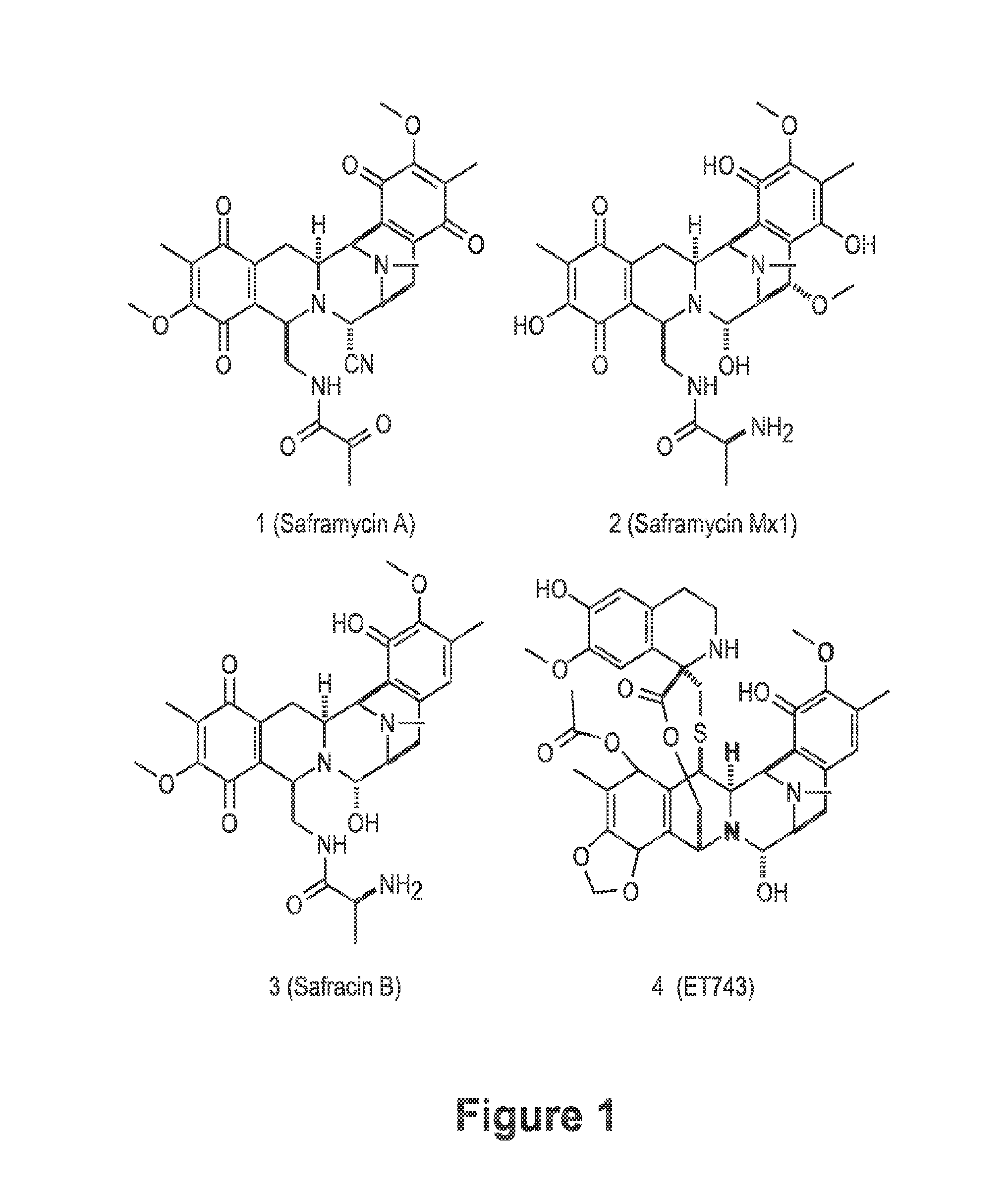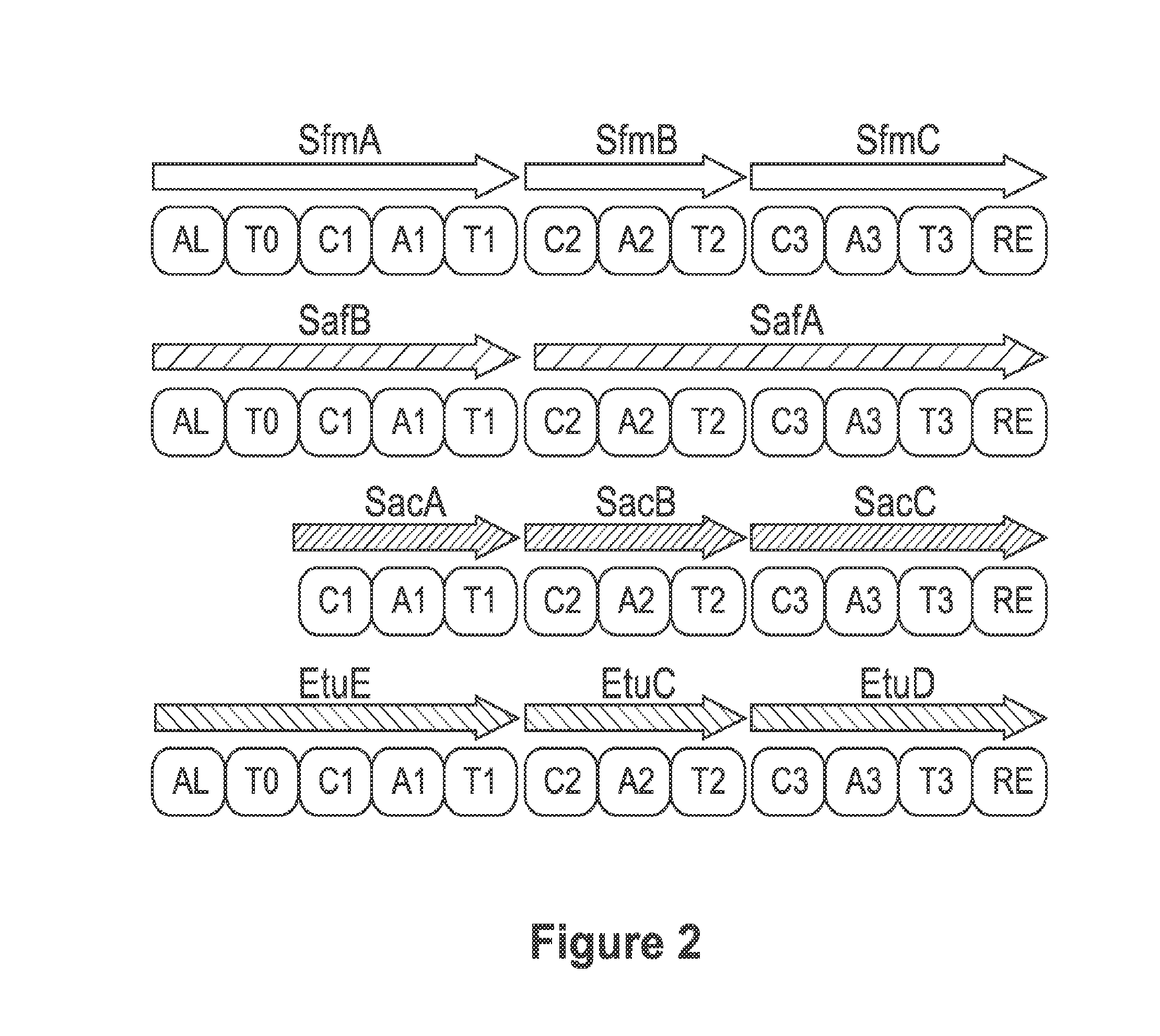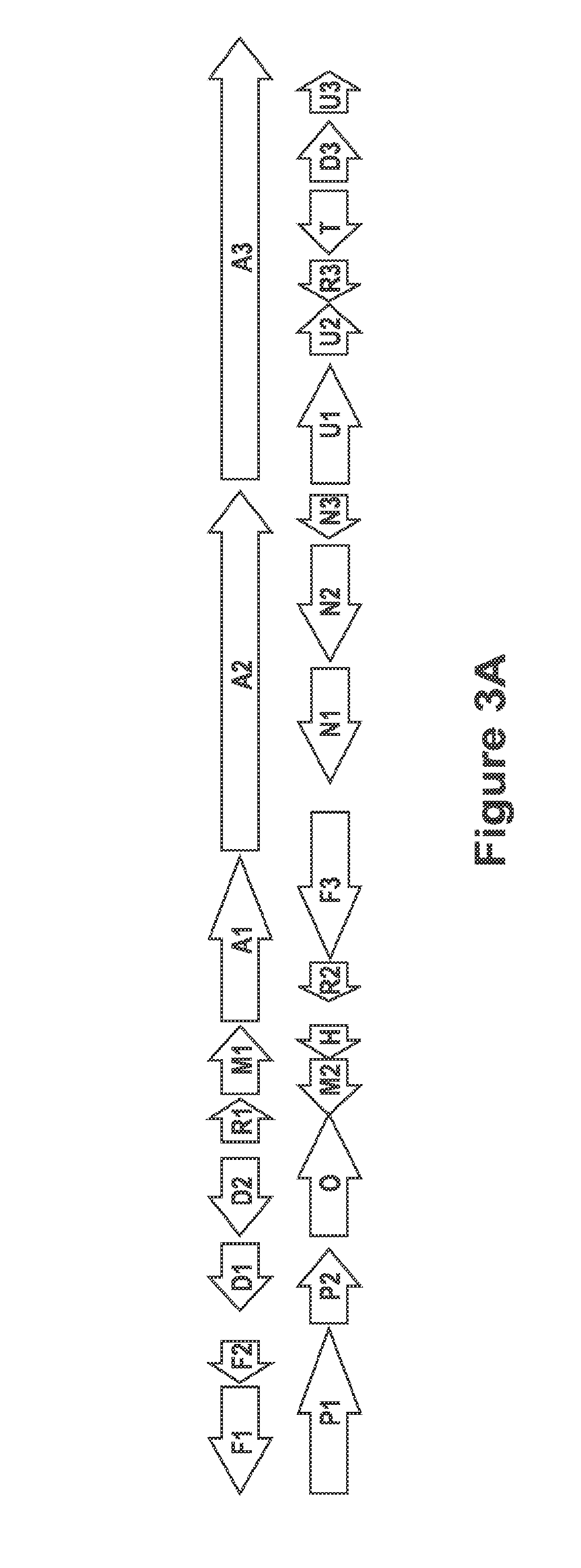Biosynthetic Pathway for Heterologous Expression of a Nonribosomal Peptide Synthetase Drug and Analogs
- Summary
- Abstract
- Description
- Claims
- Application Information
AI Technical Summary
Benefits of technology
Problems solved by technology
Method used
Image
Examples
example 1
Collection of Ecteinascidia turbinata
[0060]Ecteinascidia turbinata is widely distributed in the Caribbean and Mediterranean in warm waters at relatively shallow depths often near mangroves. E. turbinata and their larvae are unpalatable to fish, with substance removable by dialysis which cannot be denatured, suggesting that a small molecule such as ET743 is serving as a serve as a chemical defense [Young et al., Marine Biology 96: 539 (1987)]. Interestingly, the larvae of Bugula neritina, the bryostatin source, are similarly unpalatable due to production of bryostatin by bacteria that are specifically located. E. turbinata samples were collected near the Mote Marine Laboratory Tropical Research Laboratory on Summerland Key in Florida. Tunicate samples were washed, and then frozen on dry ice for shipping. Alternatively, DNA was prepared on-site according to a CTAB method [Piel et al., Proceedings of the National Academy of Sciences 101: 16222-16227 (2004)]. To verify ET743 production...
example 2
High-Throughput Sequencing of E. turbinata
[0061]The E. turbinata samples collected were then prepared for high throughput sequencing and subjected to two rounds of Roche 454 FLX™ Platinum sequencing. Of the more than 90,000 strains identified in the sample, the best candidate for ET743 production was identified. Previously, Moss and coworkers had examined 16S rRNA genes from E. turbinata and found that three bacterial species dominated, with one accounting for >50% of clones examined and assigned as a δ-proteobacteria, Candidatus Endoecteinascidia frumentensis (AY054370). In-situ hybridization was used to identify specific intracellular localization of the bacteria and it was also identified in the larvae—suggesting that a symbiosis or other close relationship may be occurring [Moss et al., Marine Biology 143: 99 (2003)]. E. turbinata collected from multiple sites was later shown to contain five persistent strains of bacteria [Perez-Matos et al., Antonie van Leeuwenhoek 92(2): 155 ...
example 3
Secondary Metabolite Identification
[0063]Field-collected tunicate samples of E. turbinata from the Florida Keys were confirmed to contain ET-743 and related metabolites using high-resolution, high-mass accuracy, liquid chromatography-Fourier transform ion cyclotron resonance mass spectrometry (LC-FTICR-MS). Known biosynthetic precursors were identified from the tunicate by extracted ion chromatograms at ±20 ppm, including the M+H+ and (M−H2O)+H+ for ET-743 (1), ET-597 (19), ET-594 (21) and ET-583 (18). Confirmation by LC-MS / MS was performed on-line with FTICR-MS and an iontrap-mass spectrometer (IT-MS). Since all four compounds identified had previously been characterized by MS / MS, assignment of product ions was straightforward as observed fragmentation was consistent between earlier studies using fast atom bombardment (FAB)-collision induced dissociation (CID) [Sakai et al., J. Am. Chem. Soc. 118: 9017-9023 (1996)], and work by the inventors with electrospray ionization (ESI)-(CID)...
PUM
| Property | Measurement | Unit |
|---|---|---|
| Fraction | aaaaa | aaaaa |
Abstract
Description
Claims
Application Information
 Login to View More
Login to View More - R&D
- Intellectual Property
- Life Sciences
- Materials
- Tech Scout
- Unparalleled Data Quality
- Higher Quality Content
- 60% Fewer Hallucinations
Browse by: Latest US Patents, China's latest patents, Technical Efficacy Thesaurus, Application Domain, Technology Topic, Popular Technical Reports.
© 2025 PatSnap. All rights reserved.Legal|Privacy policy|Modern Slavery Act Transparency Statement|Sitemap|About US| Contact US: help@patsnap.com



